Thank you for participating in this week long glimpse into the world of Spiders of Southern Africa. The following is a summary of the weeks discussions.
Each section contains links that will help you explore the day's topic and your relationship with the world. If you have any comments or would like to just say thanks, please go to the bottom of the page a leave a comment.
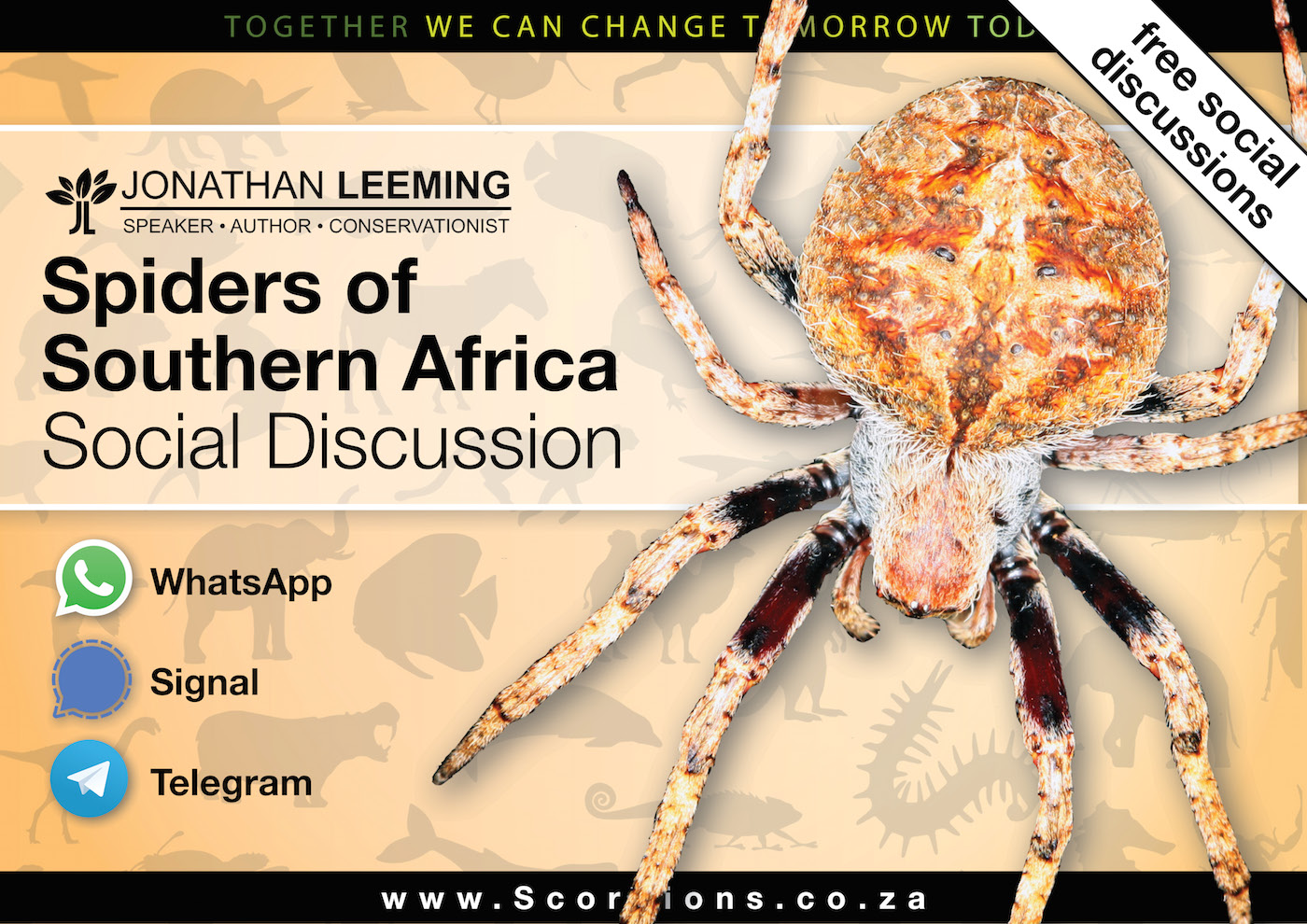
There are about 2500 species of spider in southern Africa, occurring in a wide variety of terrestrial and aquatic habitats (including the intertidal zone). When identifying a spider, take note of the following:
With time and practice, identifying the common species of spider will become easier. There are many good books on spiders available from your local bookshop or online store. For a more in-depth experience, join someone who is knowledgeable on spiders on a walk or course.
If you enjoyed this section then you will love my Sspiders of Southern Africa Natural History Presentation and my Arachnid Course.
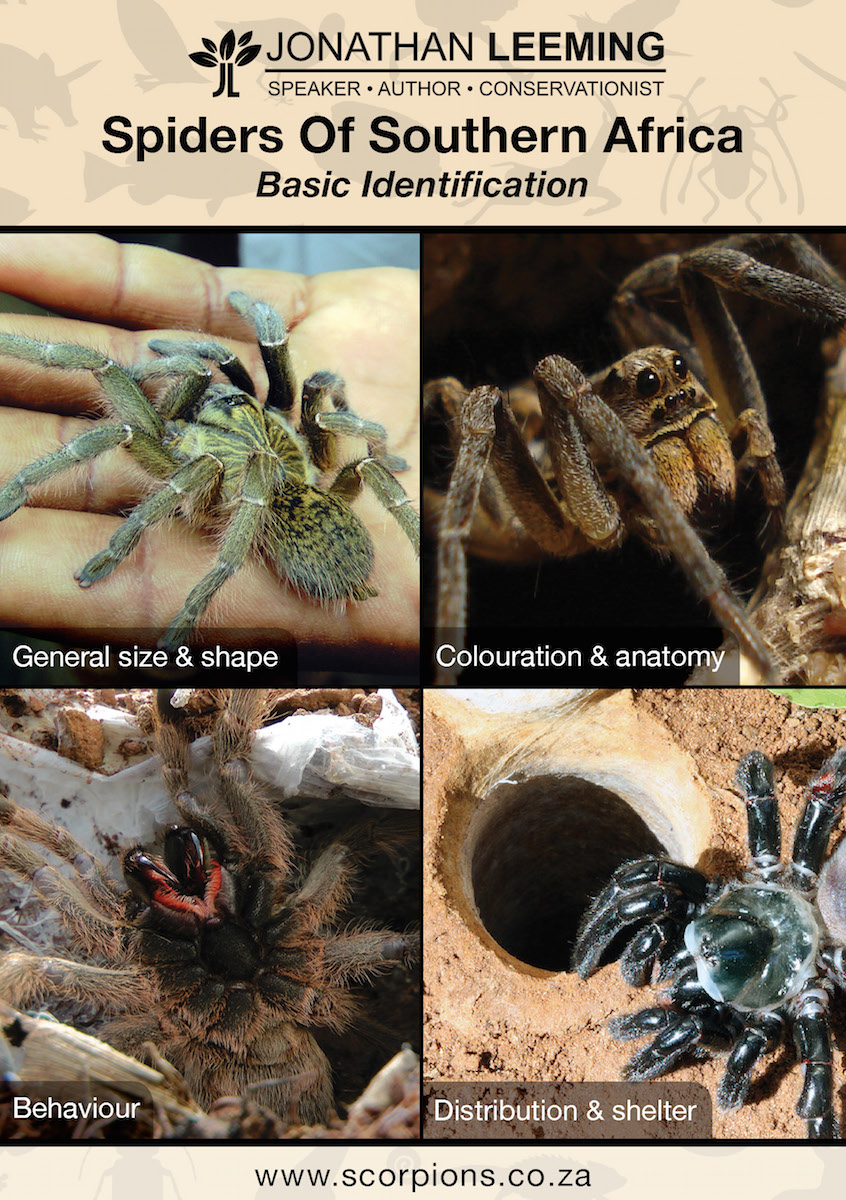
Every week, I receive a large number of messages regarding spiders. Sifting through these messages uncovers the collective values and beliefs that the average person has towards these creatures. For instance, when I’m asked, “how dangerous is it?”, it indicates to me how the persons values and beliefs towards spiders are based upon what they do not know, rather than what they know. When I’m told “I had to kill it, better to be safe than sorry”, then I have to disagree, because it is far better to live with knowledge and understanding than to react in ignorance.
I can appreciate how this ignorance enters the human intellect. When we do not know something, such as is a spider dangerous? We have a gap in our understanding. As humans we are uncomfortable with these gaps, and therefore make an effort to plug that gap. When we find some information that plugs this gap and aligns with our values and beliefs, we adopt it as fact. It does not matter if this adopted ‘fact’ originates from misinformation, folklore or social media gossip, it becomes ‘reality’ in our mind.
You cannot address someones fear of spiders using facts, because their fear is not based upon fact in the first place! The question of should we be afraid of spiders, has got nothing to do with reality, but more about how “reality” is filtered through our values and beliefs. According to the statistics, spiders are not a danger or a threat. If you want to talk about dangerous aspects of our lives, then we should be talking about fast food, smoking, alcohol consumption, driving a car, taking vitamins, and stepping out of the bath tub.
If you enjoyed this section then you will love my Creepy Crawly Walk, my Bite Me! Presentation. and my Free Bite Me! Online Workshop Tool.
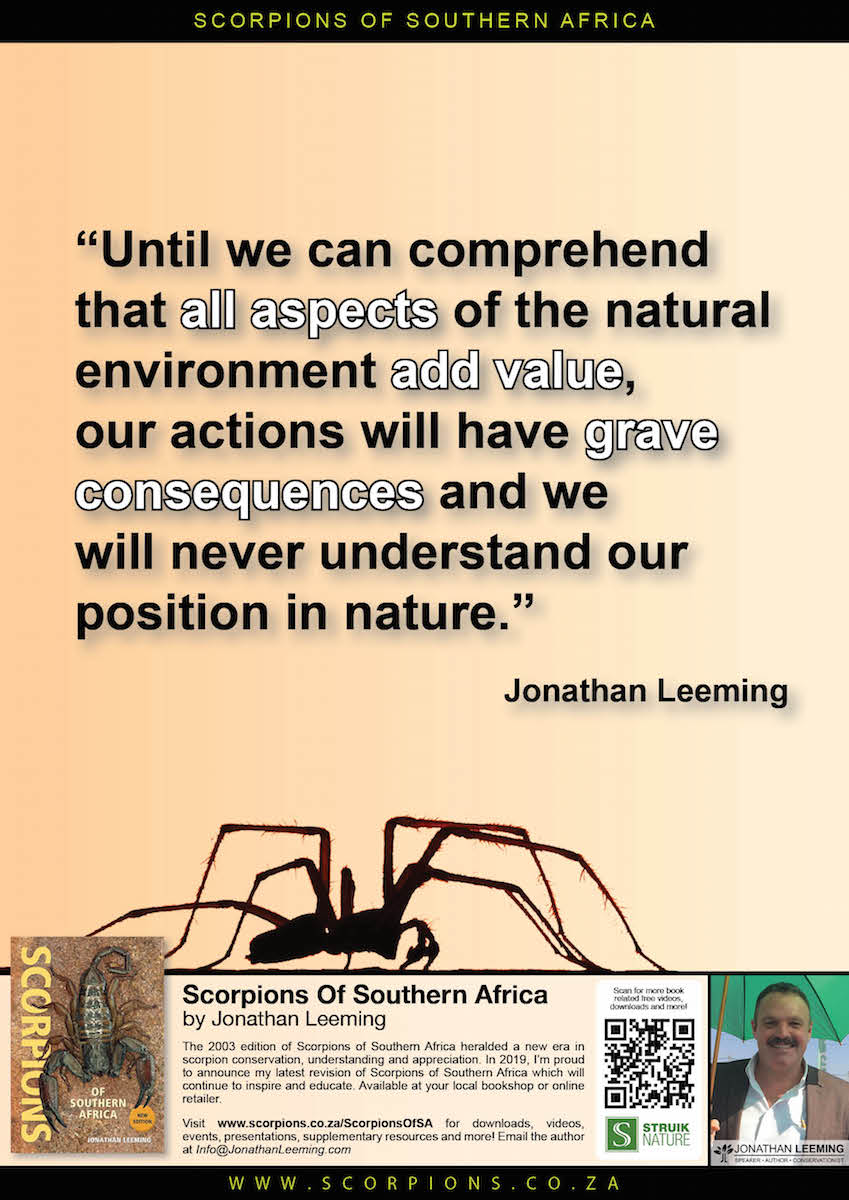
When I’m asked what the value of a spider is, what I’m really being asked is, what is the value of a spider, within the context of someone else’s values and beliefs. If these values and beliefs are aligned to how the natural environment functions and operates, then the value of a spider is obvious. If someones values and beliefs are disconnected from how the natural environment functions and operates, then the value of a spider will be difficult to comprehend.
Regardless of how connected we are to the natural world, we have to recognise that if an animal exists, it adds value in its own unique way, even though this value may not be obvious to us. We have to be prepared to accept that there are many things that we do not understand about the world. To think that we know everything about everything is testament to the egotistical mindset of mankind that is at the root cause of so many of the challenges that we face as a society.
The diversity and sheer number of spiders is testament to the role that they play in the ecosystem. Examples of how spiders demonstrate value is through the principles of biomimicry. Spider silk is a material that is anti-bacterial, stronger than steel at the same diameter, super stretchy and sticky, it pulls water molecules out of the air and is electrostatic! Spiders add value in their own innate way. Understanding what that value is depends on our understanding and comprehension of the world.
If you enjoyed this section then you will love my Creepy Crawly Walk, Biomimicry Walk and my Deadly Innovation Presentation.

The World Wildlife Fund’s Living Planet Report of 2020 showed that since 1970, human activities and influence have decreased populations of mammals, birds, fish, amphibians and reptiles by on average 68%. The disappearance of insects and spiders around lights at night is testament to the consequences of a society that we are all part of.
Legislation pertains to the larger species of spider, simply because they have been targeted by poachers who collect spiders for the pet trade. There are 3 layers of legislation aimed at protecting South Africa spiders.
Why the need for legislative protection? Poaching for the pet trade, habitat destruction and the use of insecticide (commercial farming) exerts a huge negative influence upon spider populations. The following conservation efforts not only help to protect spiders but all other animals. Having your say in development applications, not killing spiders intentionally, avoiding the use of insecticides and pesticides, keeping domestic cats indoors at all times, never buy wild animals or support the pet trade. If you see anyone collecting spiders, immediately report them to the local authorities.
If you enjoyed this section then you will love my Conservation Leadership Presentation.
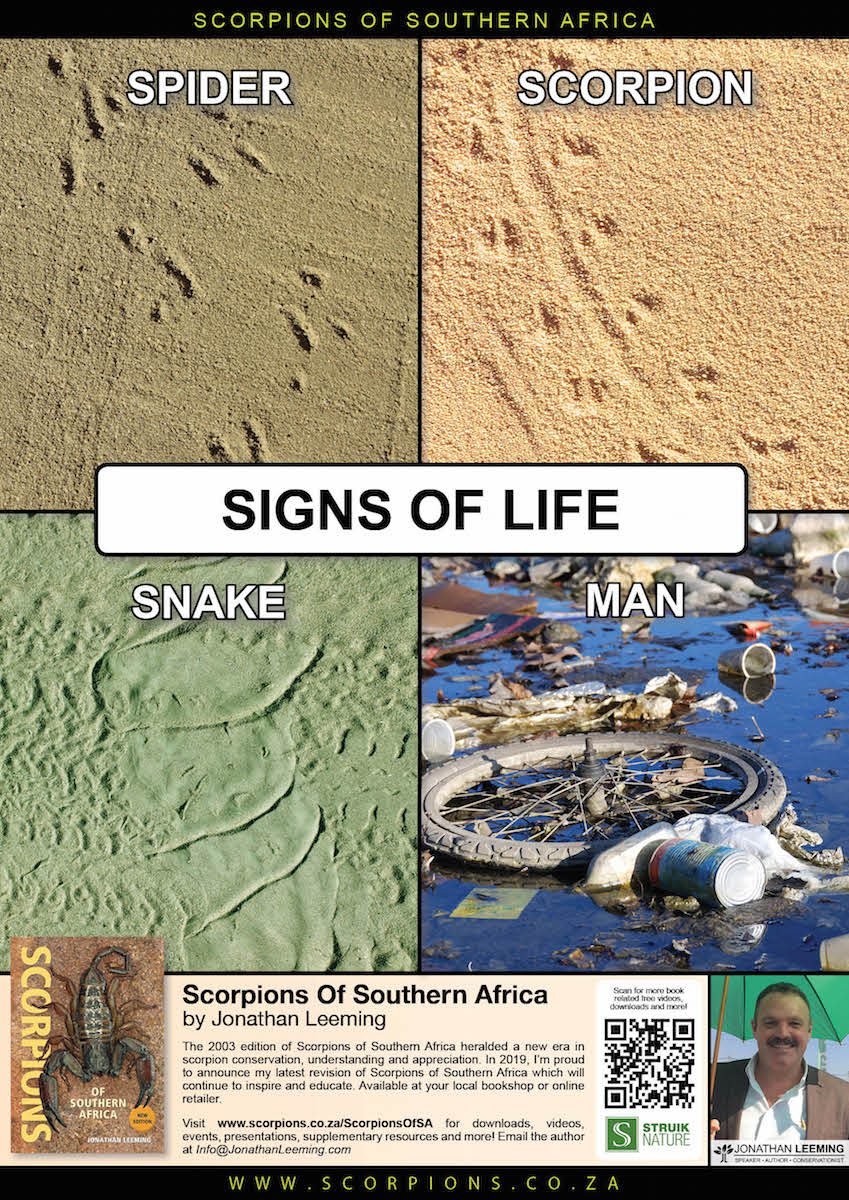
Out of about 2500 species of spider in southern Africa, only 18 species are considered medically important. Spider venom is not designed to catch humans, but rather as a secondary defence mechanism. The following kinds of venom are common in spiders:
Spider bite misdiagnosis is very common which creates the misperception that spiders are a legitimate health threat. Many people claim they have been bitten by a spider even though there is no evidence to suggest so. If the spider was not seen then a good question to ask is, ‘What makes you think that a spider is the cause of the symptoms?”
A spider bite can be easily self treated at home. The only spider bite related medical emergency is a bite from a Button Spider. The South African Vaccine Producers, manufacture Latrodectus (Button Spider) antivenom.
If you enjoyed this section then you will love my Essential Spider Bite First Response Seminar and my Spider bite And Scorpion Sting First Aid Course.
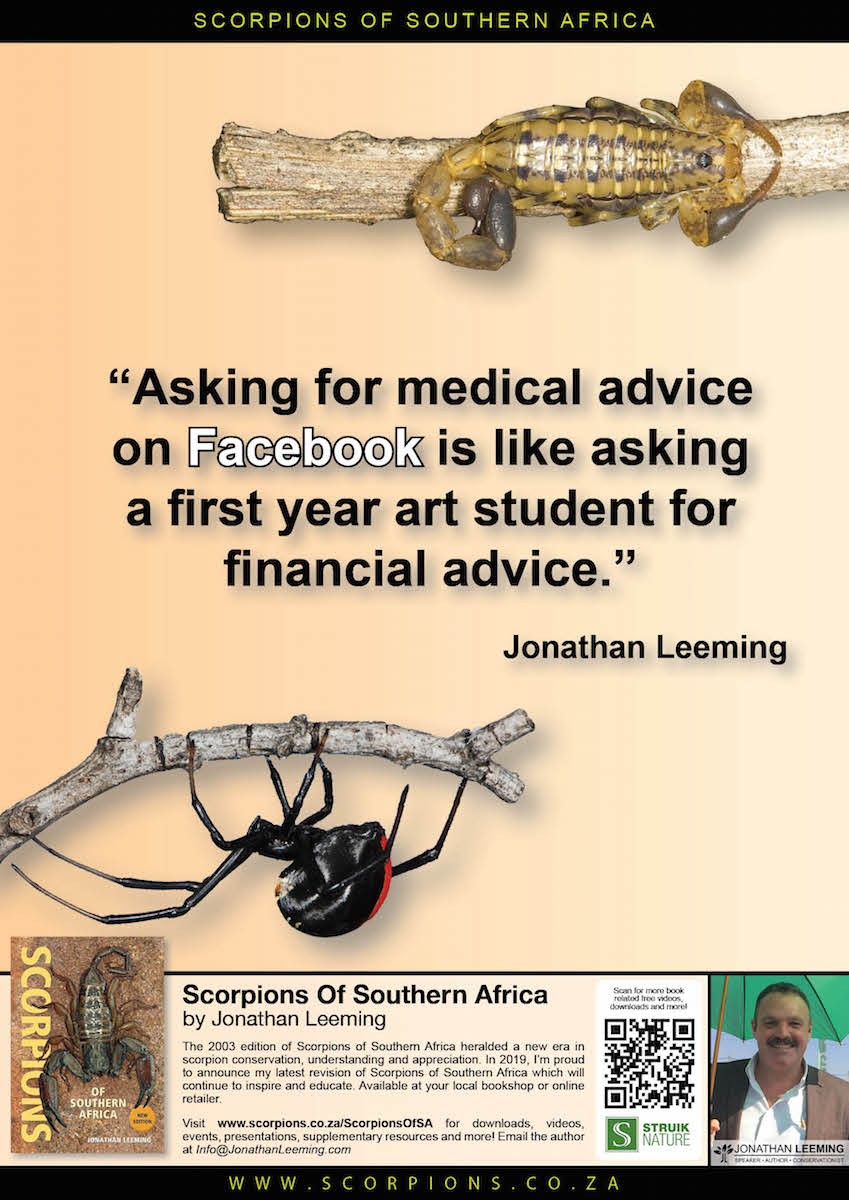
There are many conservation efforts in your area that not only conserve spiders, but all aspects of the environment. Conservation takes doing, if you want to assist in conserving wildlife in your area, then please consider getting involved with one of the many projects, or begin at home or your garden.
If you enjoyed this series of posts, then you will LOVE my Spider Bite First Response Seminar. This 45 minute seminar provides a structured framework that will greatly reduce the risk of being bitten by a spider, and provide the best possible outcome, should a spider bite occur in both humans and pets. I have adapted this seminar for presenting online by developing free downloadable resources to help the audience implement what they learn.
You will also enjoy my latest book entitled One World. I wrote it for anyone who considers themselves living through a period of change, is uncertain about the future, and who wants to make the world a better place. One World is available for purchase from Wildbooks.
Lastly, if you can use some free educational material then go to www.Scorpions.co.za and www.Jonathanleeming.com and help yourself to the free online educational resources such as posters, workshop tools, social media memes and articles.
Jonathan Leeming



Thank you for this series of posts on our group. I attended one of your lectures many years ago and was instantly hooked by your message. Keep up the great work! I hope to attend one of your events soon.
Thank you Paul. My message of, everything adds value in the world, is even more important that ever!
Thank you for very interesting info on spiders. Derrick
Thank you for taking the time to post your message to our group on spiders. I forwarded them to our home school group and have a great response. It has opened up a discussion on spiders, their value in the world and as you said, our values and beliefs towards them.